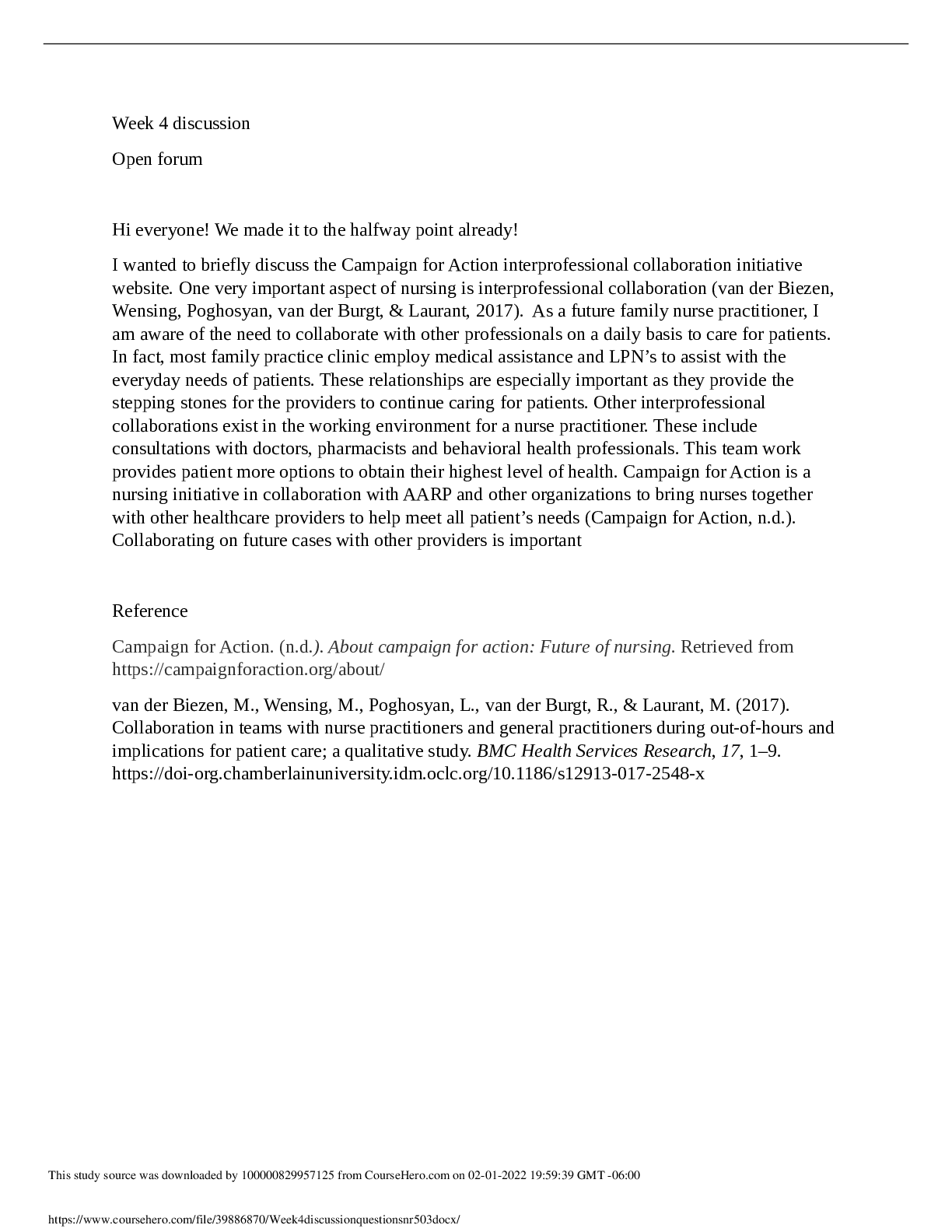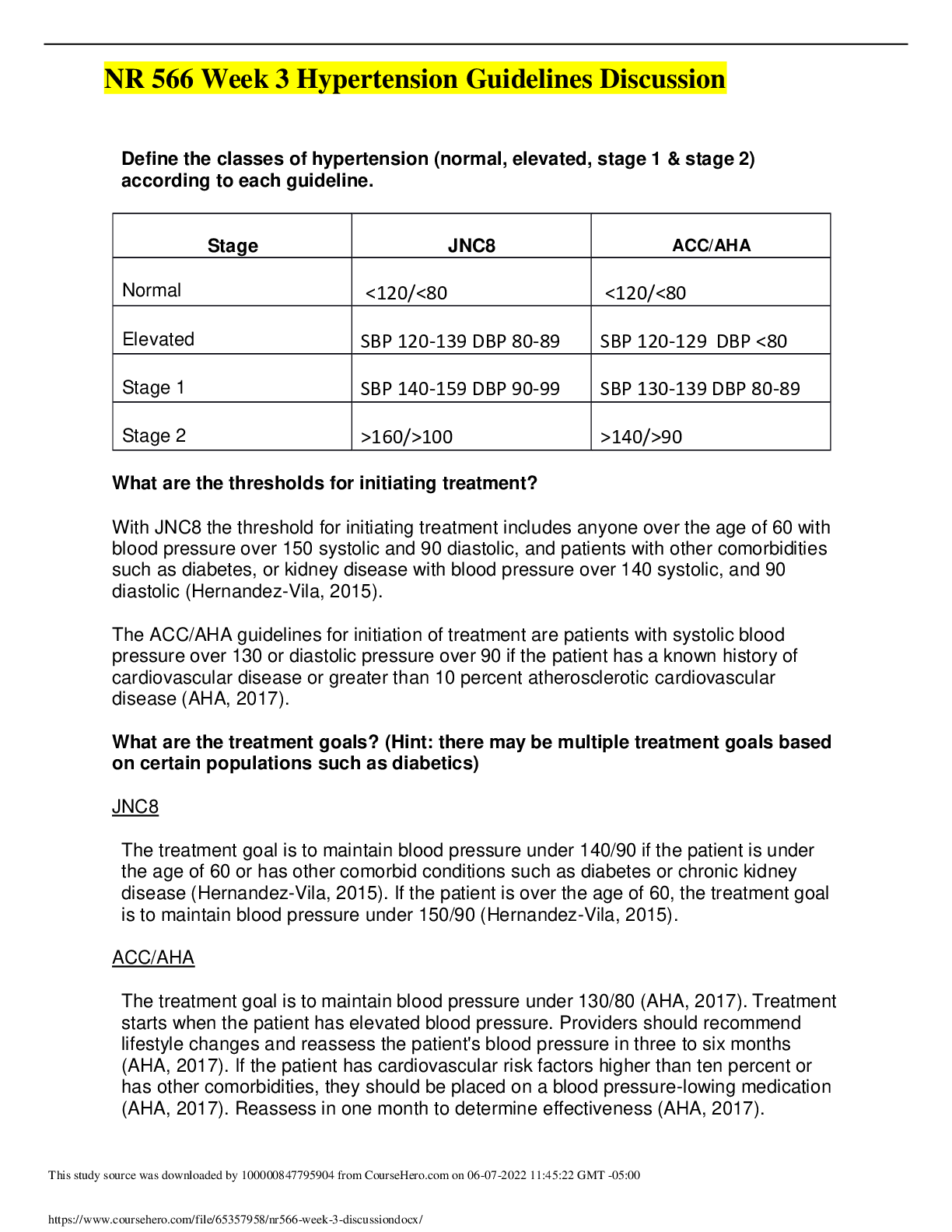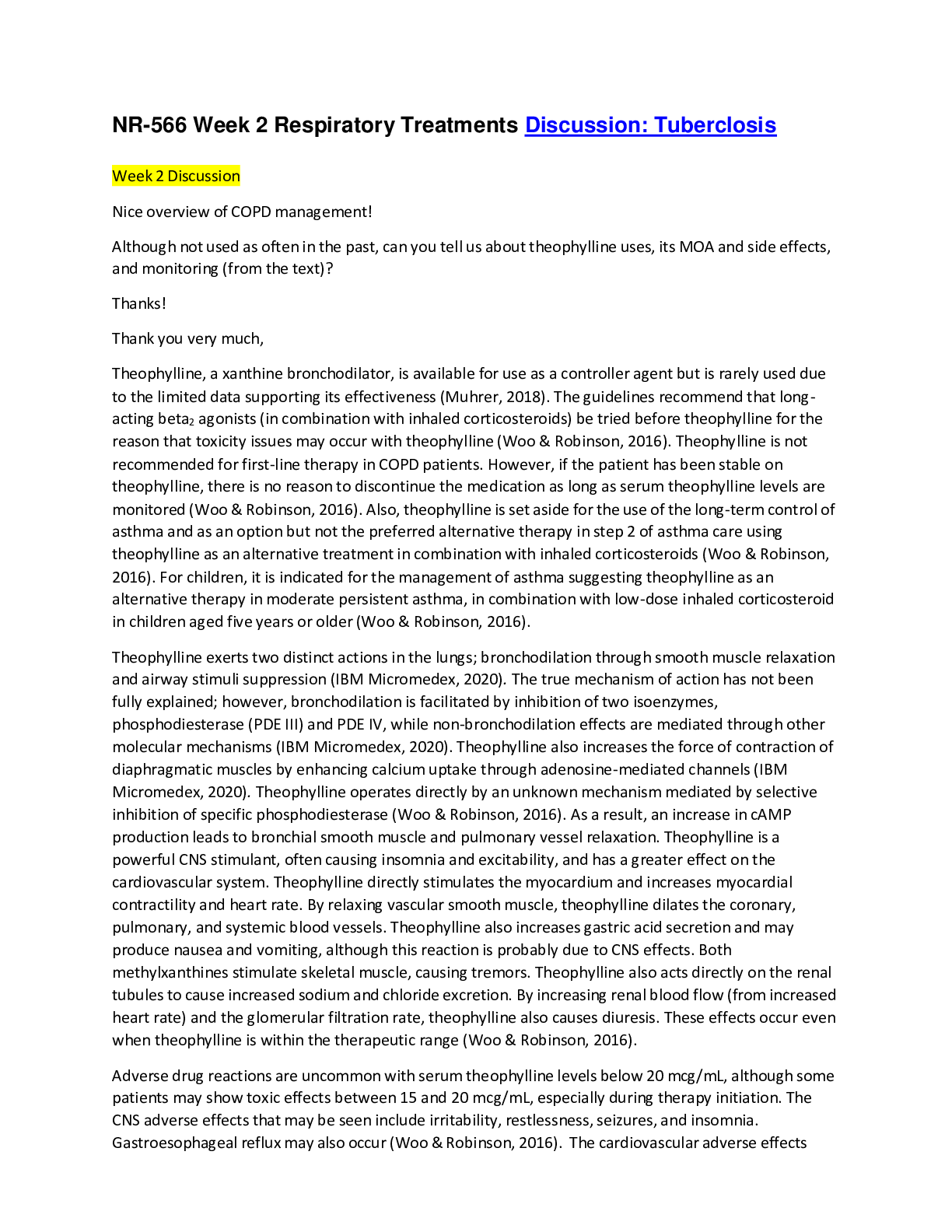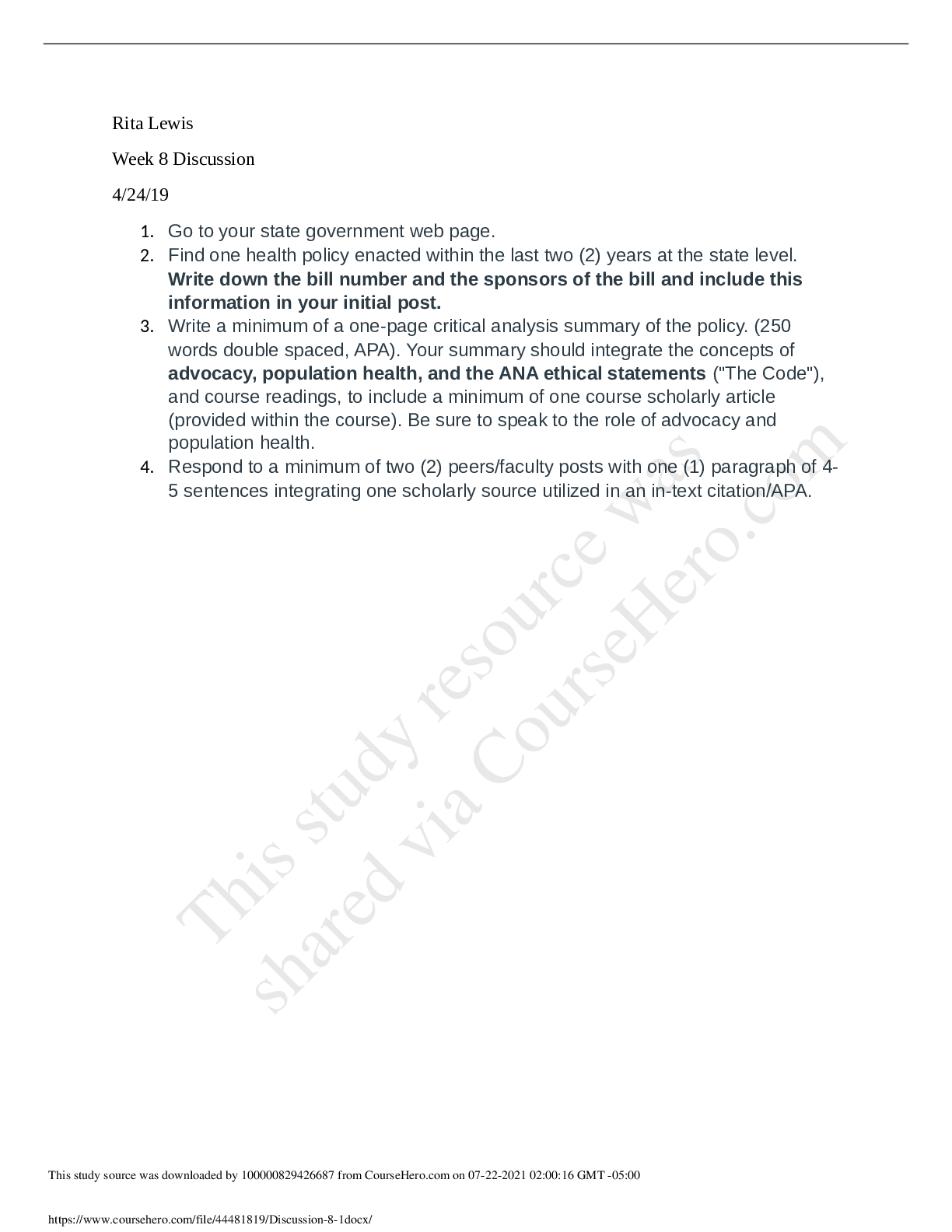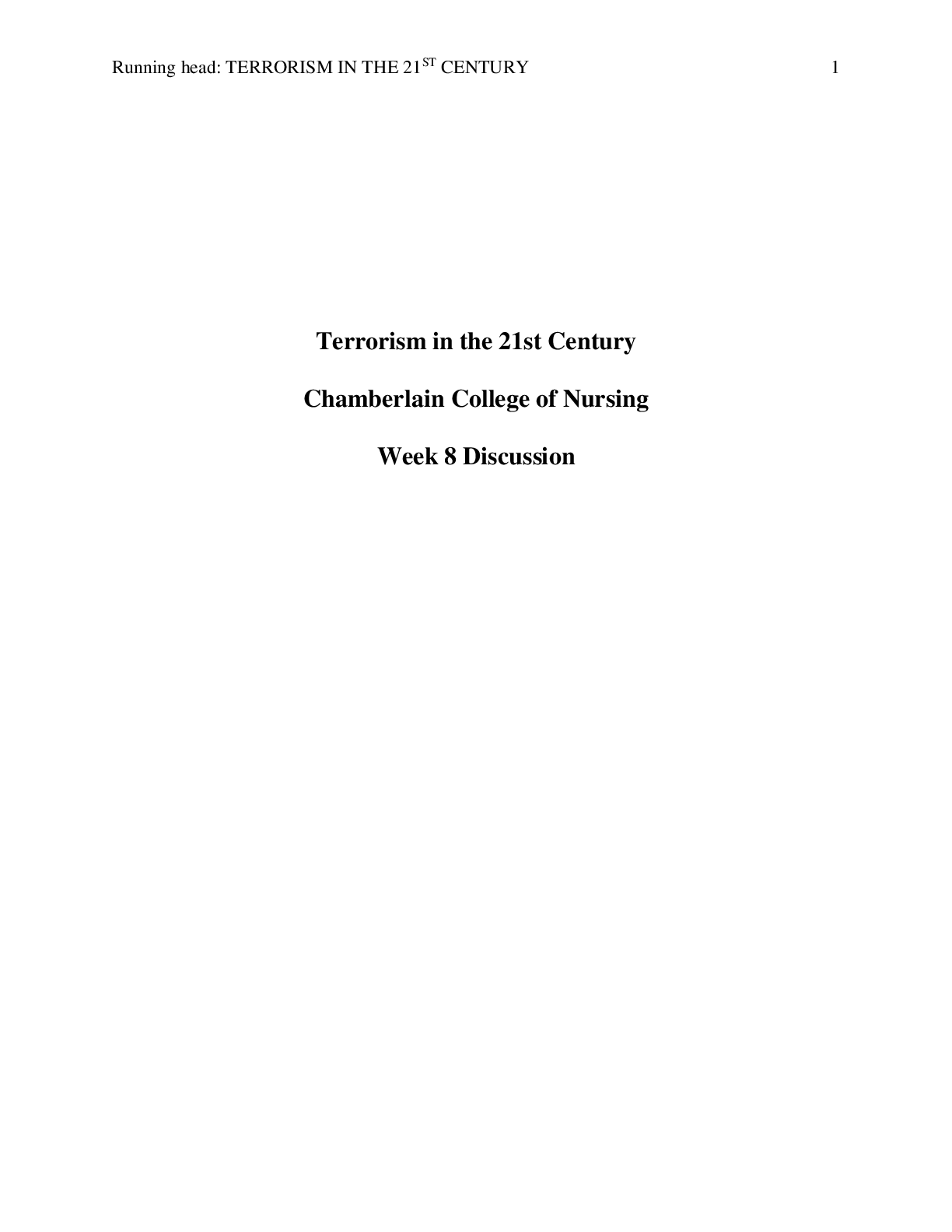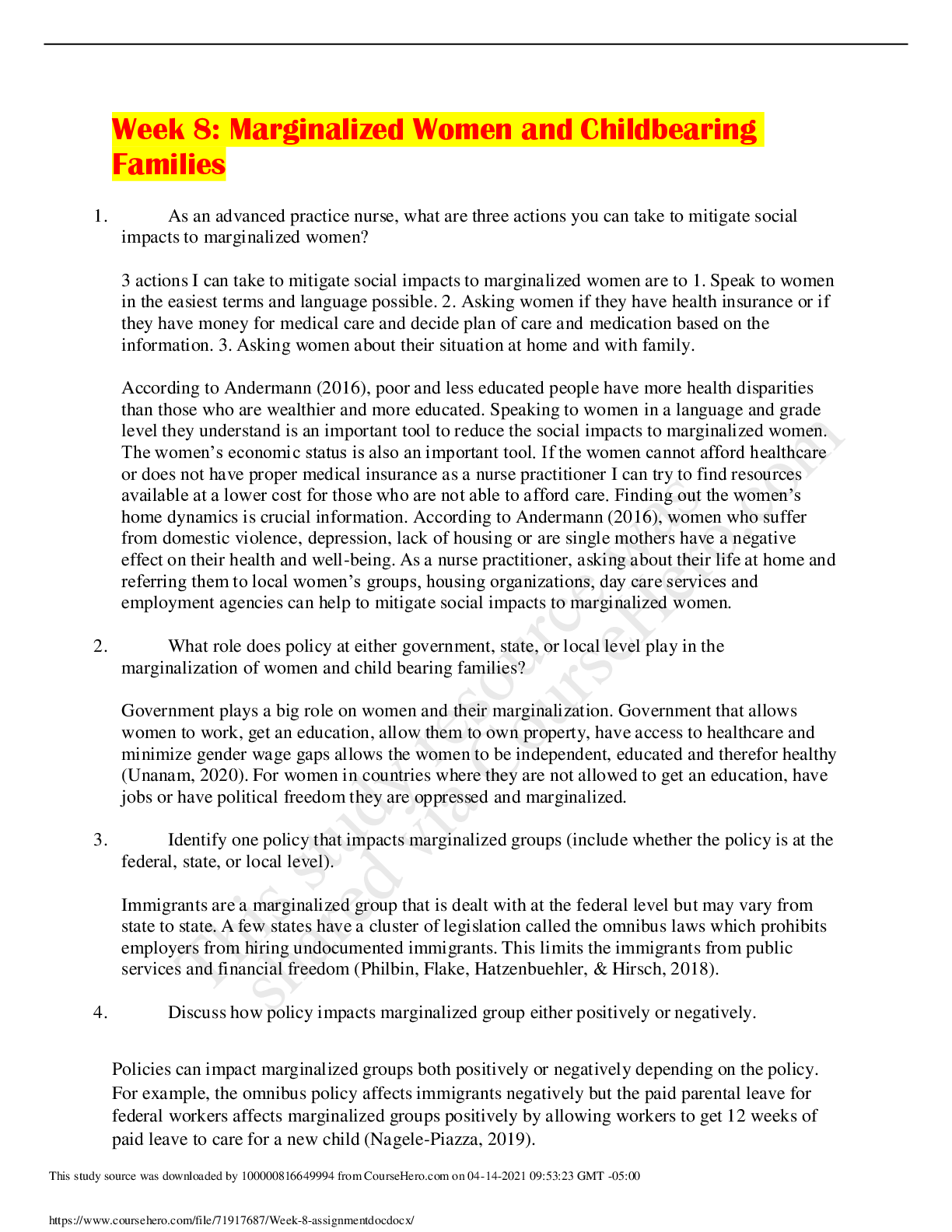*NURSING > DISCUSSION POST > NR 602 Week 8 Discussion: Marginalized Women and Childbearing Families (GRADED) (All)
NR 602 Week 8 Discussion: Marginalized Women and Childbearing Families (GRADED)
Document Content and Description Below
NR 602 Week 8 Discussion: Marginalized Women and Childbearing Families Dr. Green and class, 1. As an advanced practice nurse, what are three actions you can take to mitigate social impacts... to marginalized women? Three actions that an advanced practice nurse can take to mitigate social impacts to marginalized women are creating a trusted relationship with the patients, referring the patients to local support services and keeping an ongoing communication with the patients and the facilities, and facilitating access to these services by acting as a reliable resource person throughout the process. Patients that have a trusting relationship with the advanced practice nurses will take into consideration advice regarding their health but also regarding any other aspect of their life such as housing. The advanced practice nurse can help connect the patients with different support resources that are located inside and outside of the healthcare system such as local women’s groups, housing advocacy, or employment agencies. Providers can also advocate for individual patients by facilitating proper documentation to the organizations, writing letters on behalf of the patient, and helping the patients to access the programs or benefits that they qualify. 2. What role does policy at either government, state, or local level play in the marginalization of women and childbearing families? Policies play an important role in the marginalization of women and childbearing families because they can strengthen different areas in the health care system to benefits this population. Policies that facilitate health care access for women who need maternity care, family planning, and other reproductive health care services are essential to the different services that women need. Also, policies can help implement more funds towards the implementation of programs to train and recruit health care personnel to serve the communities in need. Policymakers should support grant funding in health literacy, education, and training for community-based organizations to sustain and expand important programs for education and training of healthcare personnel (Miller, 2017). Policymakers and public agencies should work together to increase the opportunities to make meaningful changes to the current health care system and traditional practices that improve health provider literacy in the marginalized population of women and childbearing families. 3. Identify one policy that impacts marginalized groups (include whether the policy is at the federal, state, or local level). A policy that impacts marginalized groups is the expand prevention coverage for women’s health and well-being under the Affordable Care Act. The Affordable Care Act is a health insurance reform legislation that was passed by Congress and signed into law by President Obama in 2010 (Health Resources and Services Administration, 2019). The Affordable Care Act makes prevention care affordable and accessible for all Americans by requiring health plans to cover preventive services and making it more affordable by eliminating cost-sharing for those services (Health Resources and Services Administration, 2019). This legislation provides an opportunity for women to get preventive health care such as mammograms, screenings for cervical cancer, prenatal care, and other services to be covered with no cost-sharing. 4. Discuss how policy impacts marginalized group either positively or negatively. This policy can impact marginalized groups in a positive way. This legislation helps increment health insurance coverage for women, lower their health care costs, and end the worst insurance industry abuses against them. This legislature was created to ensure that women have access to preventive and essential services, eliminating gender discrimination by health insurance companies, and making health insurance more available and affordable for women and their families (Snyder, 2018). Policies and laws sometimes are enough to achieve substantial social change. The underlying challenge is often the existence of persistent social and cultural norms that create relations of power and disadvantage between different social groups based on gender, class, disability, age, or ethnicity. References Health Resources and Services Administration. (2019). Women’s preventive services guidelines. Retrieved from https://www.hrsa.gov/womens-guidelines/index.html Miller, D. P., Bazzi, A. R., Allen, H. L., Martinson, M. L., Salas-Wright, C. P., Jantz, K., Crevi, K., & Rosenbloom, D. L. (2017). A social work approach to policy: Implications for population health. American Journal of Public Health, 107(S3), S243–S249. https://doi.org/10.2105/AJPH.2017.304003 Snyder, H.A., Weisman, C.S., Liu, G., Leslie, D., & Chuang, C.H. (2018). The impact of the Affordable Care Act on contraceptive use and costs among privately insured women. Women's Health Issues, 28 (3), 219-223. https://doi.org/10.1016/j.whi.2018.01.005 Abby, Healthcare providers should be able to create an environment where patients feel safe. Advanced practice nurses are trained to collect detailed histories, assess patients holistically, and then develop treatment plans that address more than physical needs, opening the door for therapeutic communication and building trust between patients and providers. Women that are the victim of domestic violence and have low economic status feel the necessity of staying in an abusive relationship because they do not feel capable of living in their own. Patients with lower socioeconomic status backgrounds tend to have increased exposure and the likelihood of suffering from harmful future outcomes (American Psychological Association, 2020). When these women visit the physicians, often they have difficulty being assertive in their relationships with health care providers because they have low self-esteem and feel demeaned. Knowing how to ask about domestic violence and how to respond requires a keen eye and commitment by the providers to explore more than just physical injuries. Keeping the domestic violence issue at the forefront of each patient visit increases the chance that victims will admit a problem and get the help they need to live a safe and healthy life. Reference American Psychological Association. (2020). Violence and socioeconomic status. Retrieved from https://www.apa.org/pi/ses/resources/publications/violence Dr. Green, The COVID 109 pandemic has impact single mothers with children negatively. With the pandemic came the lockdown and that required all the schools to close and many jobs too. Many single mothers were facing the hard situation of balancing jobs sometimes from home, homeschooling, and housework with little or no support. The fact that some of those single moms still need to leave home during the pandemic for work such as medical staff, supermarket workers and bus drivers, creates a childcare dilemma whether stop working due to school or childcare closure. As these single mothers stop work, their financials had decreased, and with that comes the insecurity of not being able to provide food for the children creating a more stressful situation for these families. The lack of available care services places too much of a burden on women, who are not able to break out from the cycle of less secure and lower-paid job positions (Kantamneni, 2020). Reference Kantamneni N. (2020). The impact of the COVID-19 pandemic on marginalized populations in the United States: A research agenda. Journal of Vocational Behavior, 119, 103439. https://doi.org/10.1016/j.jvb.2020.103439 [Show More]
Last updated: 2 years ago
Preview 1 out of 3 pages
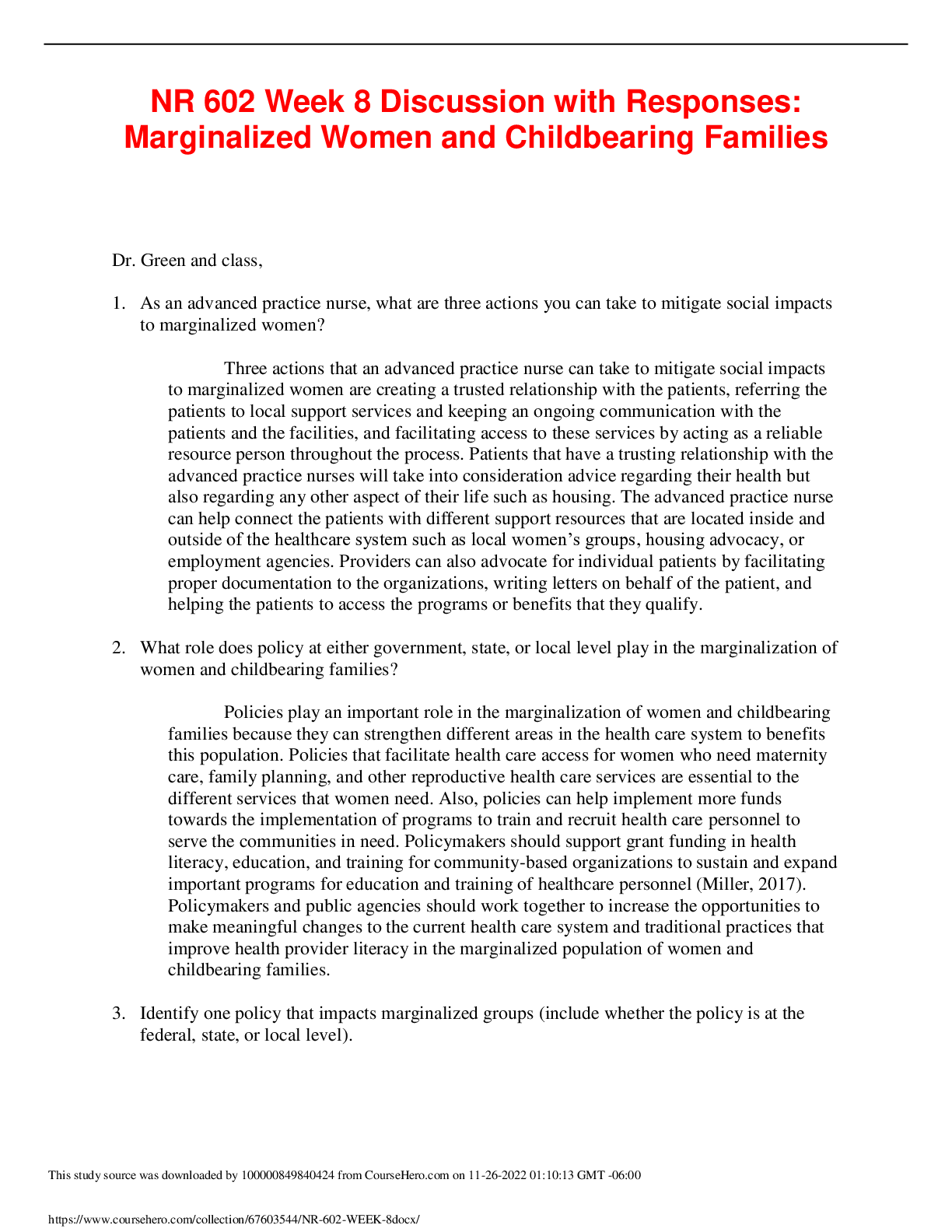
Buy this document to get the full access instantly
Instant Download Access after purchase
Buy NowInstant download
We Accept:

Reviews( 0 )
$7.00
Can't find what you want? Try our AI powered Search
Document information
Connected school, study & course
About the document
Uploaded On
Sep 06, 2021
Number of pages
3
Written in
Additional information
This document has been written for:
Uploaded
Sep 06, 2021
Downloads
0
Views
134







